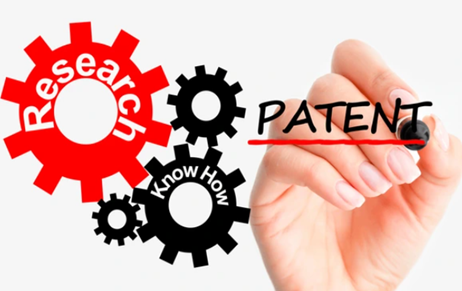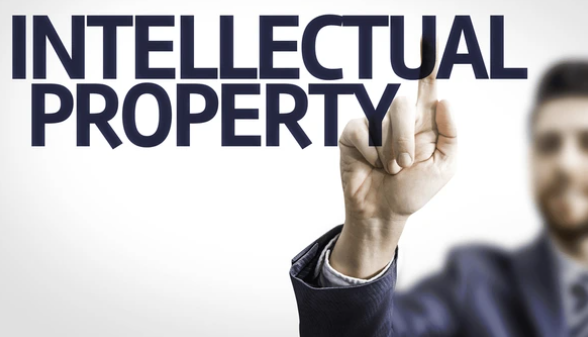The fifth generation of wireless technology (5G) is a transformative leap in mobile communications. This…
The WTO Trips Waiver: A Panacea To The Covid-19 Menace?
INTRODUCTION
Ms Ngozi Okonjo-Iweala, the Director-General of the World Trade Organization (WTO), on 28th January 2022, in a press conference of the WTO General Council announced that a breakthrough in the form of an accord between the developed and the developing nations on the TRIPs Patents waiver proposal for COVID-19 vaccines could be possible within the coming weeks. This patent waiver was first proposed by India and South Africa at the WTO TRIPS Council in October 2020 and further revised in May 2021, and support for the proposal was pitched in by 57 WTO member nations.
The revised proposal submitted by India and South Africa talks about globally waiving certain provisions of the TRIPs Agreement temporarily (three years proposedly) to facilitate the smooth transfer of “health products and technology including diagnostics, therapeutics, vaccines, medical devices, personal protective equipment, their materials or components, and their methods and means of manufacture for the prevention, treatment or containment of COVID-19.”. Proponents of the waiver say that this could help spur local production and result in the more equitable distribution of vaccines and similar COVID-19 relief resources in the lower and middle–income countries.
With the WTO making strides towards this significant development that could potentially alter the trajectory of COVID-19 containment worldwide, it becomes imperative to analyze the viability of this move in terms of what it will signify for efficient resource distribution, production and investment incentives and the global outlook towards IP protections in the future.
WHY THE OPPOSITION
The TRIPs waiver proposal attracted backlash from numerous first world countries, noticeably those of the EU, and the pharmaceutical sector, which stipulate that this move will in fact turn counterproductive and act as a hindrance towards the efficient manufacture of vaccines and technology distribution. They reject the patents waiver proposal by arguing that IP rights incentivize innovation and argue that efficient resource distribution can be achieved through alternatives such as compulsory licensing and technology transfer arrangements etc. However, proponents of the waiver point out that these alternatives are often complex and time–consuming processes not suited for battling the exigencies of the ongoing pandemic. In light of these arguments, it is necessary to look at the proven utility of patent protections in incentivizing innovation and promoting inventions.
ECONOMIC UTILITY
Although there is significant cross-industry heterogeneity, empirical evidence generally tends to support the effectiveness of patents in stimulating innovation. In surveys conducted in the United States, Europe, and Japan in the mid-1980s and 1990s, patents were reported as being extremely important in promoting inventions and protecting competitive advantages in a few industries, notably biotechnology, drugs, and chemicals.
Furthermore, patents facilitate market entry and business formation and therefore have a favorable impact on competition. Patents may also be a necessary prerequisite for entrepreneurs to get money from venture capitalists, as evidenced by the ability of small businesses to exercise their rights in front of larger corporations (Gans, Hsu, and Stern, 2002). Furthermore, patents may also help spread technology. Patenting entails making public inventions that would otherwise be kept hidden. According to industry studies, companies’ aversion to patenting their discoveries stems mostly from a concern of sharing information with competitors. This was validated in the OECD/BIAC study on patent use and perception in the business community, which was addressed to OECD enterprises.
However, patent protection can also stifle further innovation, particularly when it restricts access to important knowledge, as is the situation in growing technology sectors where progress is cumulative and foundational inventions are protected by patents. In this respect, too wide patent protection for basic ideas can deter follow-on innovators if the holder of a patent for a critical technology refuses to share it with others under acceptable terms. This is the major argument being put forth by proponents of the proposed waiver who contend that Higher Income Countries (HIC) buy and hoard large stocks of vaccines and COVID-19 relief resources in advance, thereby resulting in a paucity of resources available for the Lower and Middle Income Countries (LMIC) and the competitive advantage provided to the HIC through patent protection prevents the necessary dissemination of production information and technology.
A MIDDLE GROUND
When considering efficient resource distribution, one must look at the multitude of factors that affect the manufacturing process of the aforementioned resources. While patents do limit resource distribution to a certain extent, they are not the only hindrance to efficient resource allocation. Numerous other components such as favorable research and development infrastructure and production capacities inter alia must be factored in. While a TRIPs Patent Waiver is an idealistic solution to battling the current COVID-19 scare, it is a short sighted measure which will inevitably turn problematic in the long run. Governments need to focus on increasing and expanding their indigenous production and R&D facilities instead of seeking the easy way out of the problem through the means of a patent waiver. While the COVID-19 scare may become a thing of the past within the next few years, the advent of large-scale globalization and international relations will certainly lead to more situations of health distress in the future. Under such situations, frequently resorting to IPR waivers will adversely impact the global outlook towards IPR protections, thereby disincentivizing investments into the research facilities of large corporations, which produce the bulk of the resources in circulation, and therefore stifling innovation.
CONCLUSION
While technology transmission is important, voluntary channels are a better way to do so. Because COVID-19 medicines and vaccines are complicated biological products, the key impediments are production facilities, infrastructure, and know-how, and a patent waiver is an inappropriate response to the problem.
Waiving IP, according to John-Arne Røttingen who was just named as Norway’s Global Health Ambassador, could only aid in the production of small molecular weight substances but not in the setting up of biological production lines. Instead, he believes that individual businesses should be pressured to offer non-exclusive licenses and technology transfer for their goods, similar to the vaccination deals reached by AstraZeneca and Novavax with the Serum Institute of India.
Such measures will indeed go a long way towards strengthening the health-care setups of the LMIC, as opposed to a patent waiver, which can only be called an illusory panacea at best.
Author: Marisha Dube – a student of Gujarat National Law University, in case of any queries please contact/write back to us via email vidushi@khuranaandkhurana.com or Khurana & Khurana, Advocates and IP Attorney,



